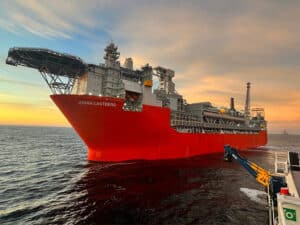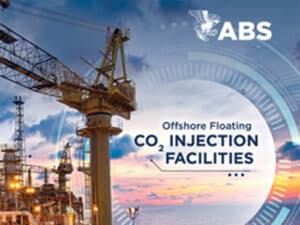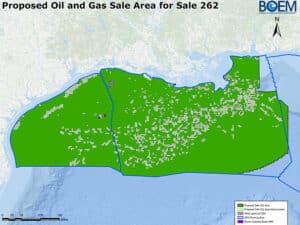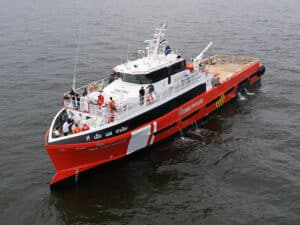
Panel finds flaws in management of deepwater drilling risks
Written by The numerous technical and operational breakdowns that contributed to the Deepwater Horizon oil rig explosion and spill from the Macondo well in the Gulf suggest the lack of a suitable approach for managing the inherent risks, uncertainties, and dangers associated with deepwater drilling operations and a failure to learn from previous “near misses.”
The numerous technical and operational breakdowns that contributed to the Deepwater Horizon oil rig explosion and spill from the Macondo well in the Gulf suggest the lack of a suitable approach for managing the inherent risks, uncertainties, and dangers associated with deepwater drilling operations and a failure to learn from previous “near misses.”
Those are among preliminary findings from a committee of the National Academy of Engineering (NAE) and National Research Council (NRC).
The committee was set up in response to a May 11, 2010 request by Secretary of the Interior Ken Salazar that the NAE and NRC conduct an independent and science-based investigation of the root causes of the Deepwater Horizon spill.
An interim report from the committee released yesterday says that the events also suggest insufficient checks and balances for critical decisions impacting the schedule for “abandoning” the exploratory well — or sealing it in transition to production — and for considering well safety.
“Important decisions made to proceed toward well abandonment despite several indications of potential hazard suggest an insufficient consideration of risks,” said Donald Winter, former secretary of the Navy, professor of engineering practice at the University of Michigan, and chair of the study committee. “It’s also important to note that these flawed decisions were not identified or corrected by BP and its service contractors, or by the oversight process employed by the U.S. Minerals Management Service and other regulatory agencies.”
“API and the industry are working diligently to address issues raised by this report. Shortly following the incident, the industry created four task forces that provided positive recommendations to the government on how to improve safety through a systems-based approach. API and the International Association of Drilling Contractors are jointly developing Well Construction Interface Document Guidelines, which will help improve safety by linking the management systems of offshore operators with those of drilling contractors. Furthermore, API is developing a standard on deepwater well design, which will provide practices that are intended to achieve a high level of total system reliability. Significant enhancements have been made to prevent and respond to a spill, and we will continue to seek ways to enhance safety. The industry looks forward to getting back to work in the Gulf of Mexico. Thousands of jobs and billions of dollars of revenue depend upon it.”
Erik Milito, director of the American Petroleum Institute’s upstream group
The report cites numerous decisions that apparently contributed to the accident, beginning with continuing abandonment operations at the Macondo site despite several tests that indicated that the cement put in place after the installation of a long-string production casing was not an effective barrier to prevent gases from entering the well.
The decision to accept the test results as satisfactory without review by adequately trained shore-based engineering or management personnel suggests a lack of discipline and clearly defined responsibilities. In addition, several clear failures in monitoring of the well appear to have contributed to its blowout; available data show hydrocarbons entered the well undetected for almost an hour before the first explosion. Timely and aggressive action to control the well was not taken, and for unknown reasons, hydrocarbons were funneled through equipment that vented them directly above the rig floor rather than overboard. These conditions made ignition “most likely,” the report says. Finally, the blowout preventer did not seal the well once activated.
Of particular concern is the lack of a systems approach to integrate the multiple factors impacting well safety, to monitor the overall margins of safety, and to assess various decisions from a well integrity and safety perspective.
The interim report notes a “multiplicity of regulatory agencies and classification societies” as being involved in oversight and says that it appears that the “various organizations [involved] sometimes were not certain of the oversight duties actually being carried out by other organizations.”
Also, “it was not apparent whether any of the organizations had developed an overall perspective for oversight of the exploratory operation. In addition, the committee notes the apparent lack of requirements or standard industry practice for a systems approach in assessing the full range of factors affecting the safety of drilling operations in the U.S. Outer Continental Shelf Region. The safety case strategies required by the United Kingdom Health and Safety Executive, the National Offshore Petroleum Safety Authority in Australia,46 and other authorities illustrate the application of a systems approach.”
For its final report, due in the summer of 2011, the committee will examine ways to establish practices and standards to foster a culture of safety and methods to ensure that schedule and cost decisions do not compromise safety. The committee will assess the extent to which there are gaps, redundancies, and uncertainties in responsibilities of multiple agencies and professional societies overseeing deepwater drilling operations, and it will consider the merits of an independent technical review to provide operation checks and balances by enforcing standards and reviewing deviations.
The report notes that a previous loss of hydrocarbon circulation in the Macondo well more than a month before the accident presented an opportunity to take actions to mitigate future risks.
The interim report says several questionable decisions were made about the cementing process prior to the accident, including attempting to cement across multiple hydrocarbon and brine zones in the deepest part of the well in a single operational step, making a hydraulic fracture in a low-pressure zone more likely; using a long-string production casing instead of a liner over the uncased section of the well; and deciding that only six centralizers were needed to ensure an even spacing between the formation rock and the casing, even though modeling results suggested that more centralizers would have been necessary. The type and volume of cement used to prepare for well abandonment and the time provided for the cement to cure may also have impacted the well’s integrity.
The Macondo well’s blowout preventer was only recently recovered and is undergoing forensic analyses. The committee will evaluate possible causes for the failure of the blowout preventer once key data are made available. Data on maintenance, testing, operating procedures, and reliability of alarms and other safety systems on the Deepwater Horizon rig will also be examined; testimony at other hearings indicates that various alarms and safety systems failed to operate as intended.
The NAE and NRC Committee reported that it expects to complete its final report by June, 2011.
You can access the interim report HERE
November 17, 2010





Leave a Reply
You must be logged in to post a comment.